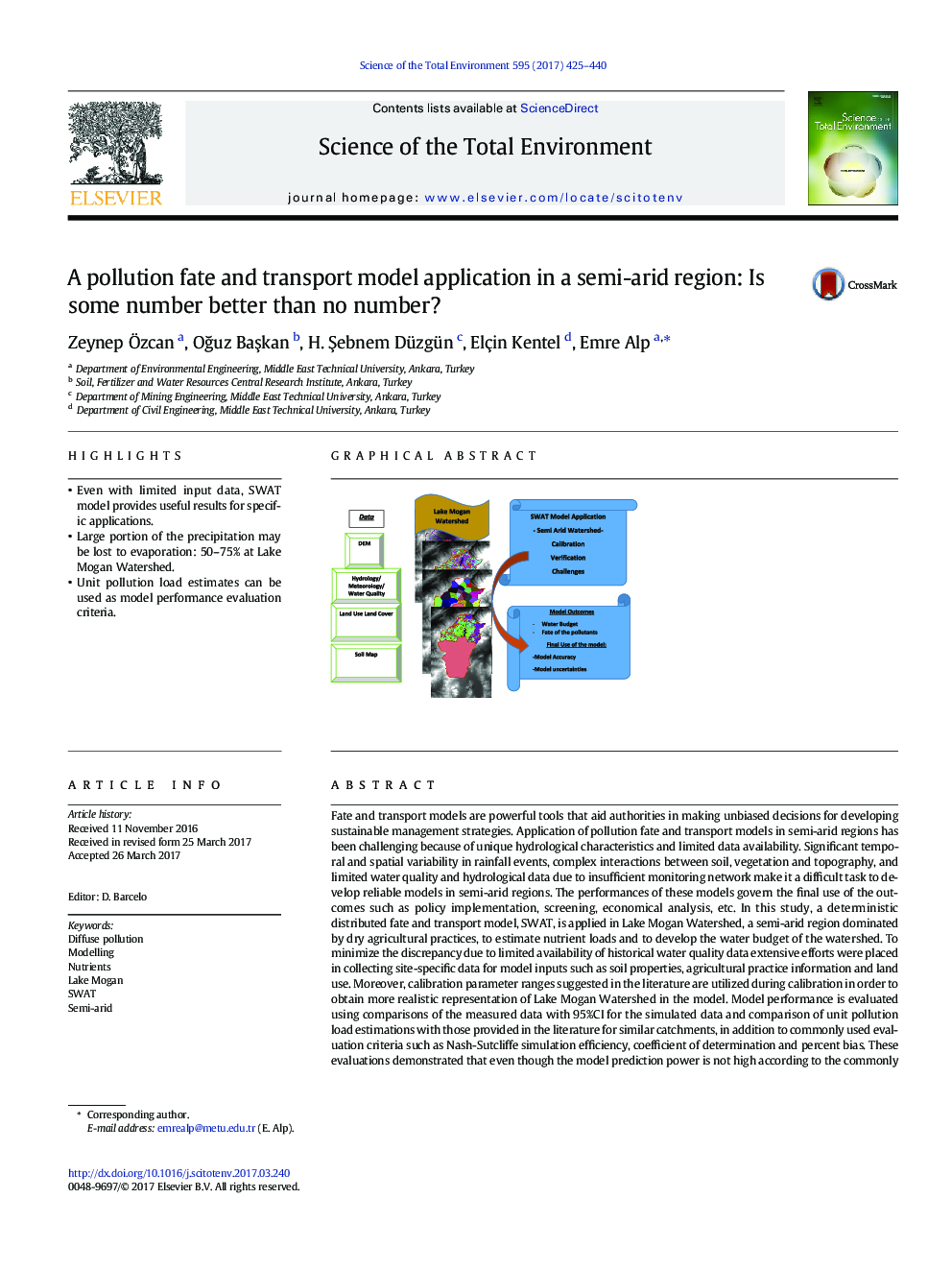| کد مقاله | کد نشریه | سال انتشار | مقاله انگلیسی | نسخه تمام متن |
|---|---|---|---|---|
| 5751297 | 1619701 | 2017 | 16 صفحه PDF | دانلود رایگان |
- Even with limited input data, SWAT model provides useful results for specific applications.
- Large portion of the precipitation may be lost to evaporation: 50-75% at Lake Mogan Watershed.
- Unit pollution load estimates can be used as model performance evaluation criteria.
Fate and transport models are powerful tools that aid authorities in making unbiased decisions for developing sustainable management strategies. Application of pollution fate and transport models in semi-arid regions has been challenging because of unique hydrological characteristics and limited data availability. Significant temporal and spatial variability in rainfall events, complex interactions between soil, vegetation and topography, and limited water quality and hydrological data due to insufficient monitoring network make it a difficult task to develop reliable models in semi-arid regions. The performances of these models govern the final use of the outcomes such as policy implementation, screening, economical analysis, etc. In this study, a deterministic distributed fate and transport model, SWAT, is applied in Lake Mogan Watershed, a semi-arid region dominated by dry agricultural practices, to estimate nutrient loads and to develop the water budget of the watershed. To minimize the discrepancy due to limited availability of historical water quality data extensive efforts were placed in collecting site-specific data for model inputs such as soil properties, agricultural practice information and land use. Moreover, calibration parameter ranges suggested in the literature are utilized during calibration in order to obtain more realistic representation of Lake Mogan Watershed in the model. Model performance is evaluated using comparisons of the measured data with 95%CI for the simulated data and comparison of unit pollution load estimations with those provided in the literature for similar catchments, in addition to commonly used evaluation criteria such as Nash-Sutcliffe simulation efficiency, coefficient of determination and percent bias. These evaluations demonstrated that even though the model prediction power is not high according to the commonly used model performance criteria, the calibrated model may provide useful information in the comparison of the effects of different management practices on diffuse pollution and water quality in Lake Mogan Watershed.
263
Journal: Science of The Total Environment - Volume 595, 1 October 2017, Pages 425-440
